Taxicabs: Motor vehicles for the transportation of persons for hire, having a normal seating capacity of not more than seven persons.
Buses: Motor vehicles for the transportation of persons for hire, having a normal seating capacity in excess of seven persons.
There might be little difference in the appearance, therefore, between a 7-passenger taxi and an 8-passenger bus. And an examination of the seals on these plates shows that they don’t always follow the above definitions.
In 1955 new types of Bus of and Taxi plates were introduced, bearing prefixes of “B” and “TX,” respectively.
Note: The weight/capacity seals used on these plates are commonly called “tabs” today, but during the years they were in use the only name applied to them was “seal.”
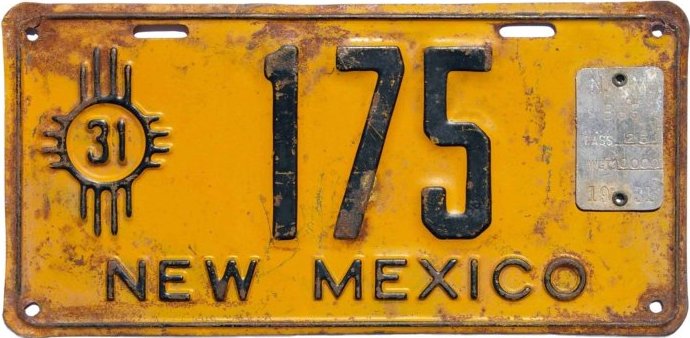
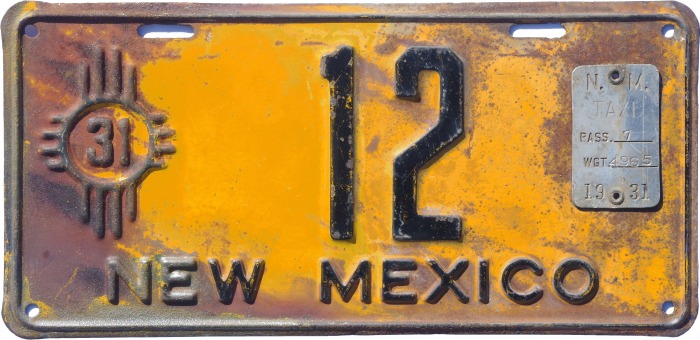
175 Bus Union Auto Trans. Co.; El Paso, Texas; 1929 Pickwick Bus; serial #67338; 10000 lbs. (Pickwick was a make of bus manufactured in California 1927-1933.)
12 Taxi Southwest Tours; Santa Fe; 1928 Cadillac Sedan; serial #327005; 4965 lbs.
185 Driverless U Drive It Co; Albuquerque; 1930 Ford Phaeton; serial #A3924463; 2285 lbs.
Note how the weight shown in the registration records matches the figure stamped on the tabs in all three cases

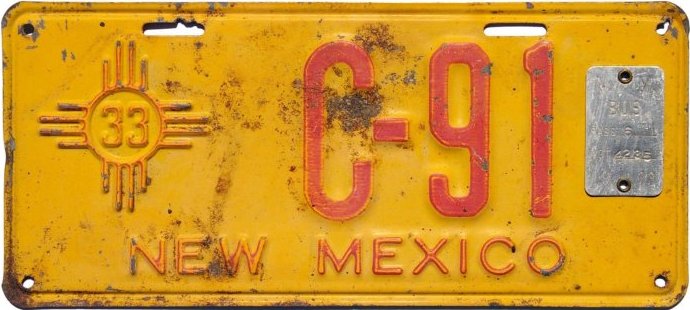
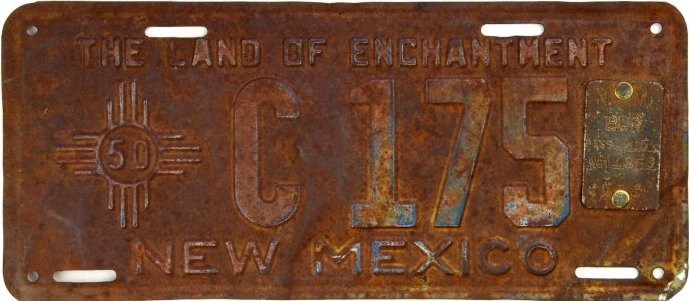

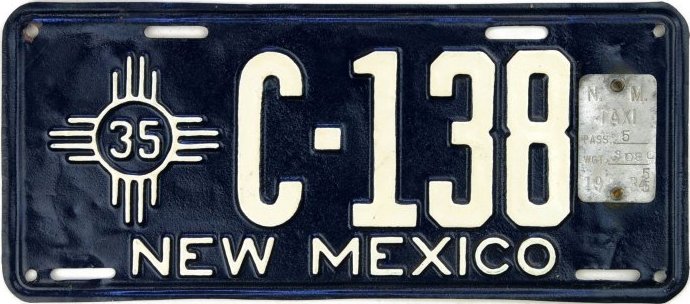
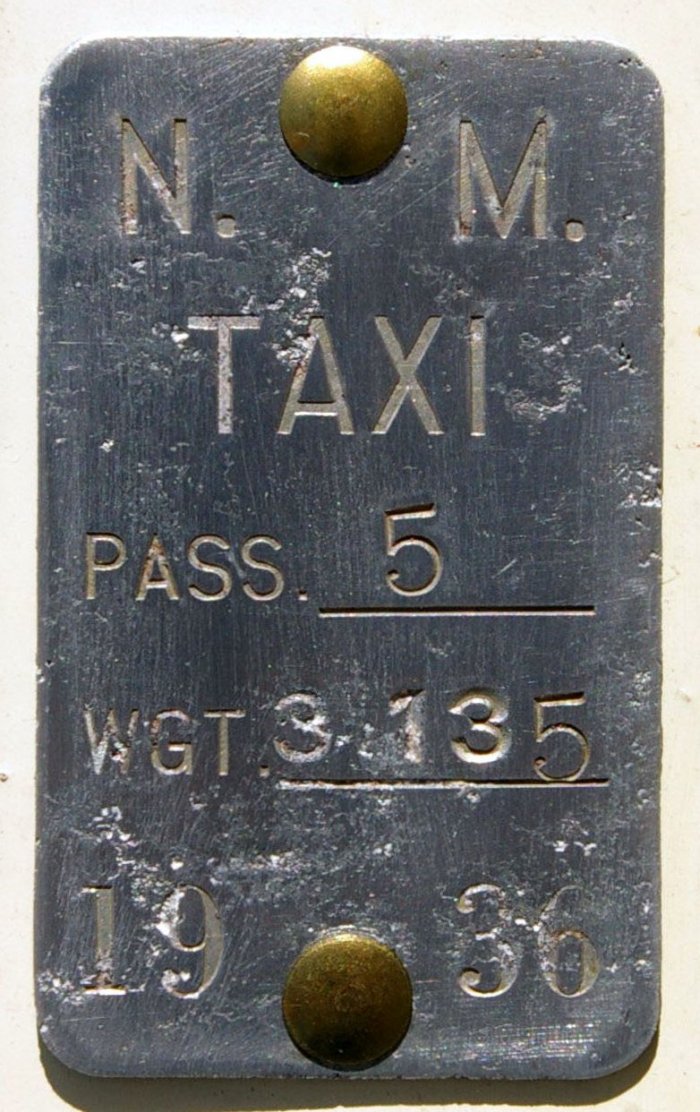
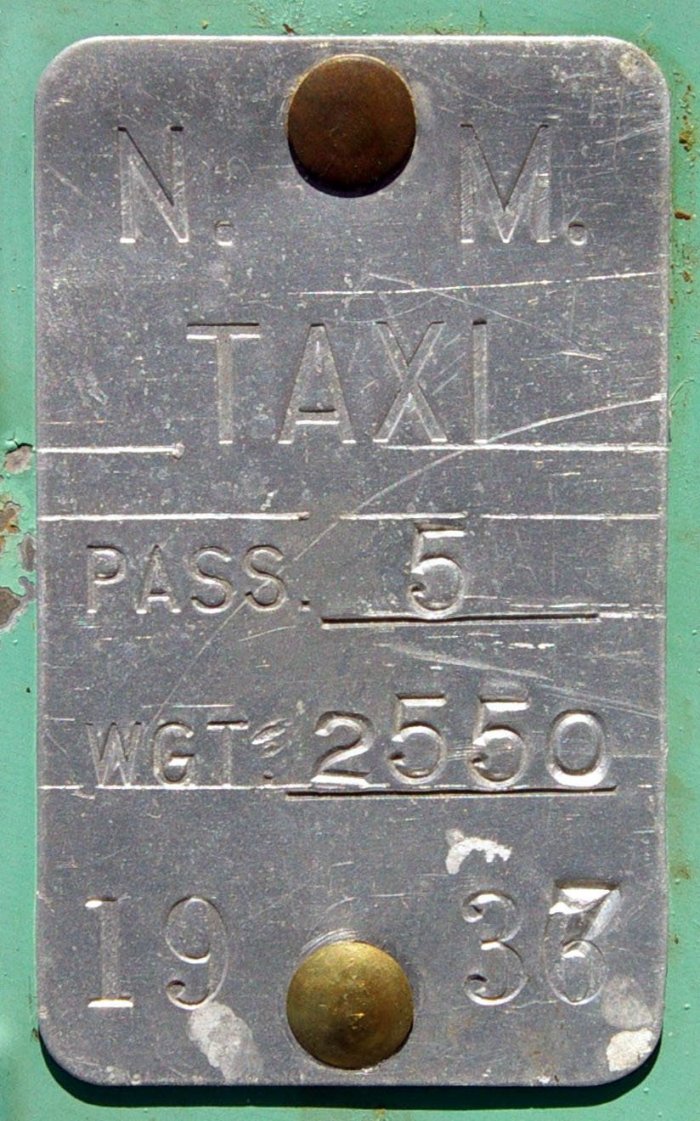
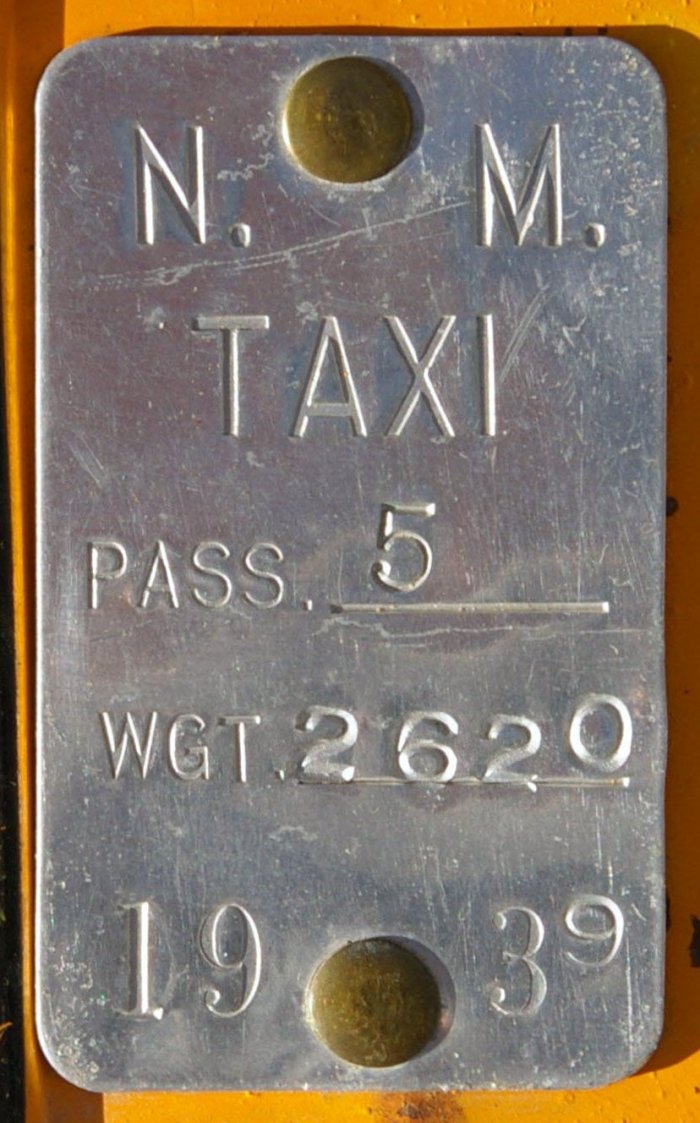
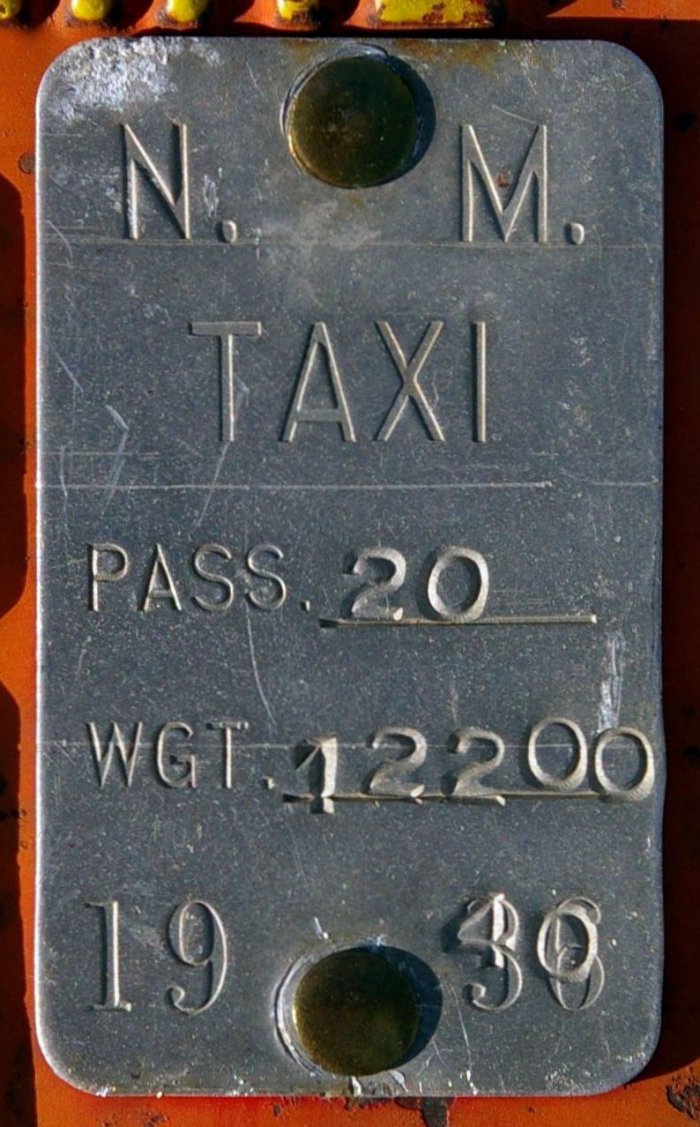
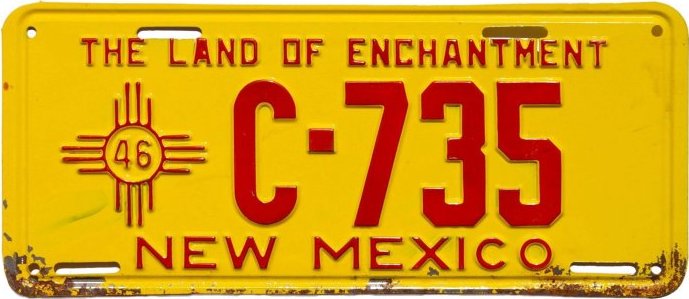
A plate that does have rivet holes, but no seal, likely came to be in that condition for one of three reasons: It is an unissued plate and therefore never had a seal attached to it in the first place; it originally did have a seal but the seal fell off; or it was the second plate of the pair where only one of the two plates received a seal upon issue. (The latter circumstance has not been positively verified, but there is anecdotal evidence to indicate that this did occur from time to time.)